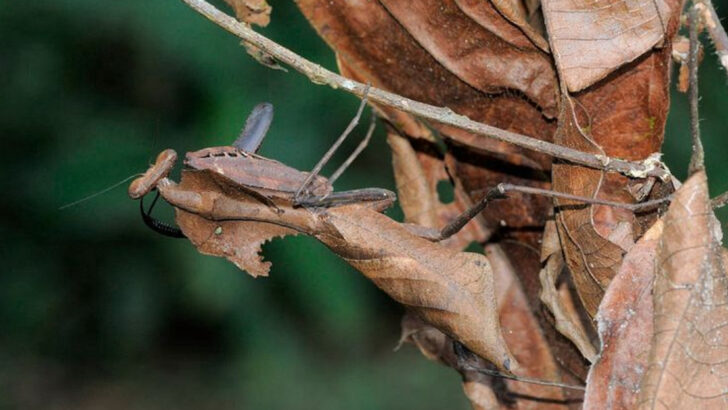Nature has its own shapeshifters—and some of them look exactly like leaves.
Not kind of. Not almost. We’re talking full-blown leafy impersonators with veins, stems, and colors that scream “I’m just a plant!” while they quietly crawl, flutter, or wait to strike.
Some are hiding from predators. Others are hiding for their prey. And all of them are so convincing, you’d walk right by without a second glance.
These eight masters of deception are weird, wonderful, and almost magical. You’ll never look at a leaf the same way again.
Leaf Insect
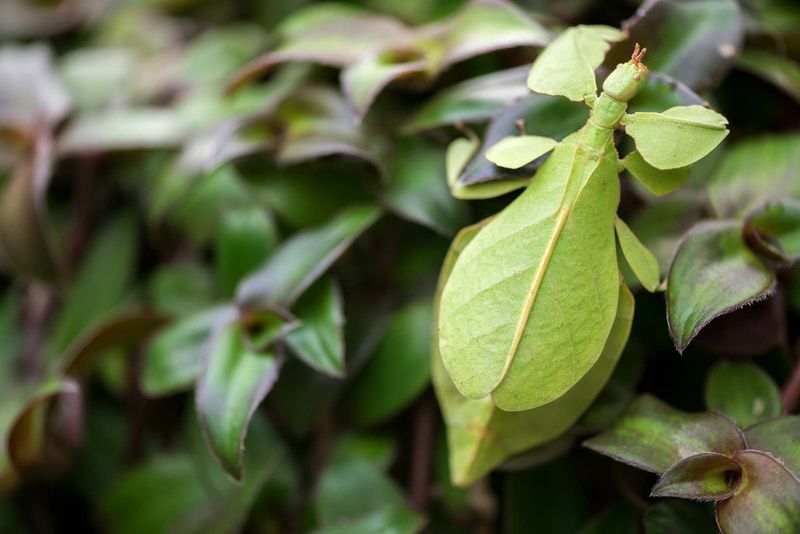
The leaf insect, a true master of disguise, is renowned for its uncanny resemblance to actual leaves. Cloaked in shades of green and brown, it mimics leaves with exceptional precision, complete with veins and edges. This insect’s deception is so flawless that it can even sway like a leaf when the wind blows. Found in Southeast Asian forests, it utilizes this camouflage technique to evade predators. Interestingly, every aspect of its appearance, from body shape to color, serves a singular purpose—survival. Such evolutionary marvels underscore the complexity of nature’s finest inventions.
Dead Leaf Mantis
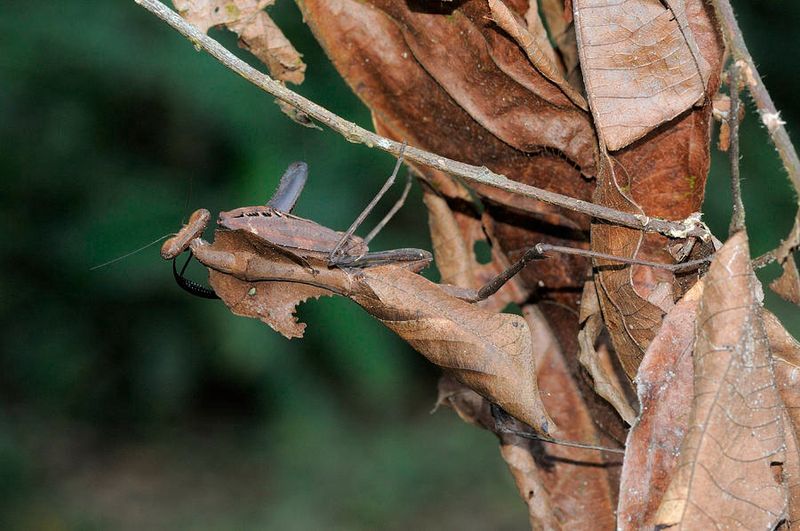
The dead leaf mantis is an extraordinary creature that masquerades as a wilting leaf. Its brown, crumpled wings resemble the texture and appearance of decaying foliage. This ingenious disguise helps it remain hidden on the forest floor, preying on unsuspecting insects. Indigenous to the rainforests of Malaysia, it utilizes its cryptic coloration to avoid detection by predators. The mantis even adopts a swaying motion, enhancing its leaf-like deception. Such behavior highlights the intricate survival strategies developed in the animal kingdom, where appearance can determine life’s balance.
Leaf-tailed Gecko

In the dense forests of Madagascar, the leaf-tailed gecko remains a symbol of nature’s creativity. Its tail, shaped and colored like a leaf, provides the perfect camouflage against predators. The gecko’s body blends with its environment, creating an illusion of lifeless foliage. Nocturnal by nature, it utilizes this disguise to ambush prey while staying protected. This remarkable adaptation not only aids in survival but has also sparked interest among scientists and nature enthusiasts alike. As a marvel of evolution, its existence underscores the subtle artistry of natural selection.
Katydid (Tettigoniidae)
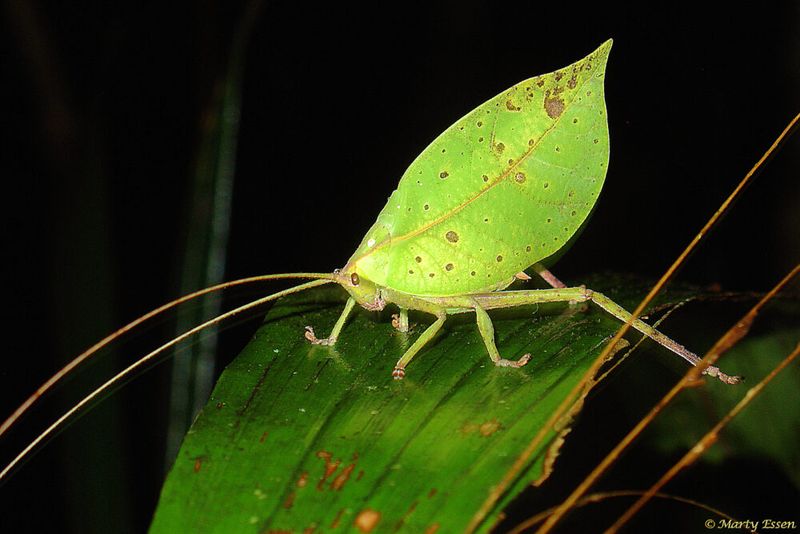
Katydids, known for their vibrant green coloration, are experts at blending into leafy environments. Their wings resemble leaves so convincingly that predators often overlook them. Found across tropical and temperate regions, katydids rely on this exceptional mimicry for protection. Their leaf-like appearance is complemented by behaviors such as remaining motionless when danger lurks. The katydid’s existence is a testament to its evolutionary armor, enabling it to traverse unnoticed in a perilous world. From their antennae to wing veins, every feature enhances their leaf-like illusion, ensuring a future amidst predators.
Buff-tip Moth
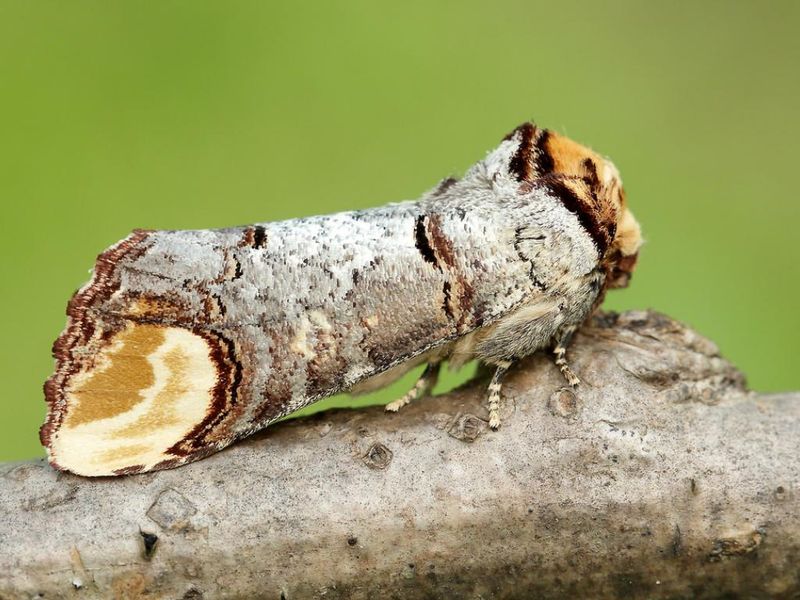
The buff-tip moth is a master illusionist, with wings that mimic the appearance of broken twigs and dry leaves. Found in temperate woodlands, this moth uses its disguise to evade birds and other predators. When at rest, its wings fold tightly, completing the illusion of a snapped twig. This clever adaptation showcases the intricate dance between predator and prey, where survival often hinges on appearance. The buff-tip moth’s remarkable camouflage not only protects it but also fascinates those who study the subtle artistry of nature’s designs.
Leaf Mimic Katydid
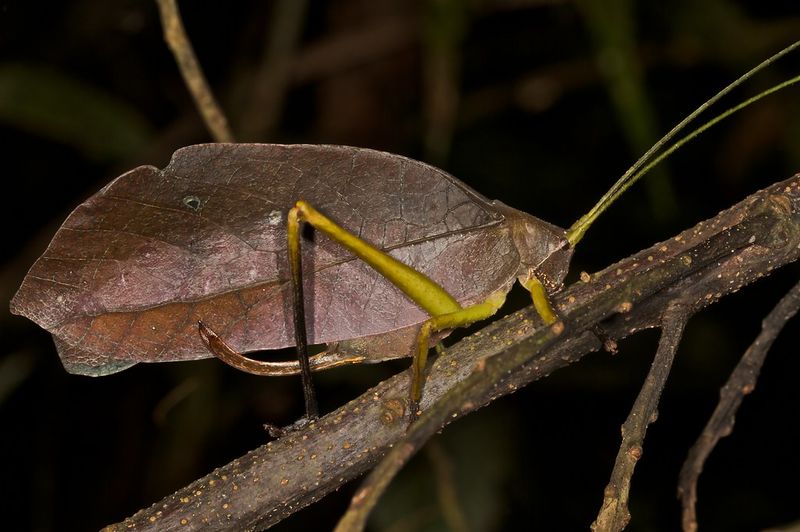
In the vibrant jungles of South America, the leaf mimic katydid stands as a testament to nature’s ingenuity. This insect’s body is an impeccable imitation of a leaf, complete with veins, blemishes, and edges. It uses this disguise to perfection, evading predators by blending into its leafy surroundings. Its existence is a vivid illustration of evolutionary adaptation, where survival is an art. The leaf mimic katydid’s uniqueness lies not just in mimicry but in its ability to thrive in a competitive habitat. Its presence enriches the biodiversity it silently guards.
Eastern Screech Owl
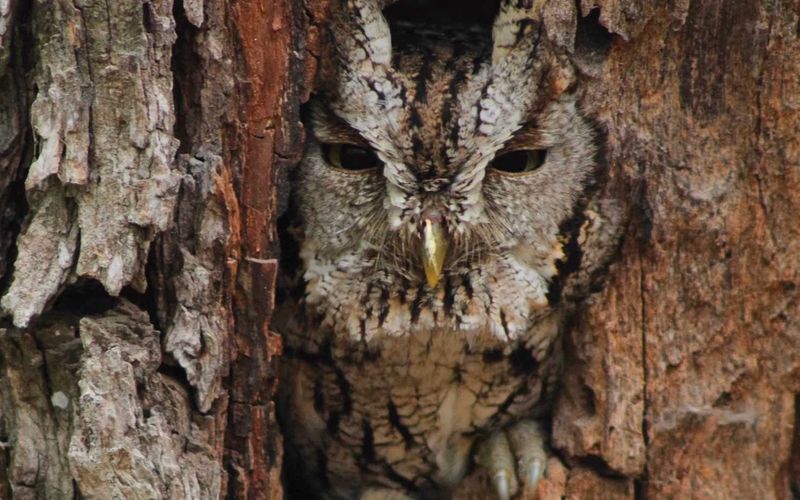
The eastern screech owl, with its cryptic plumage, finds solace in North America’s deciduous forests. Its feathers, mirroring the colors and patterns of tree bark and leaves, make it nearly invisible during daylight. This camouflage serves as a defense mechanism, protecting it from predators while allowing it to hunt at night. Its ability to blend with its environment is a tribute to nature’s evolutionary brilliance. As a nocturnal hunter, it relies on both stealth and skill, embodying the delicate balance between predator and prey. Its presence is a whisper in the night, unseen yet impactful.
Green Tree Python
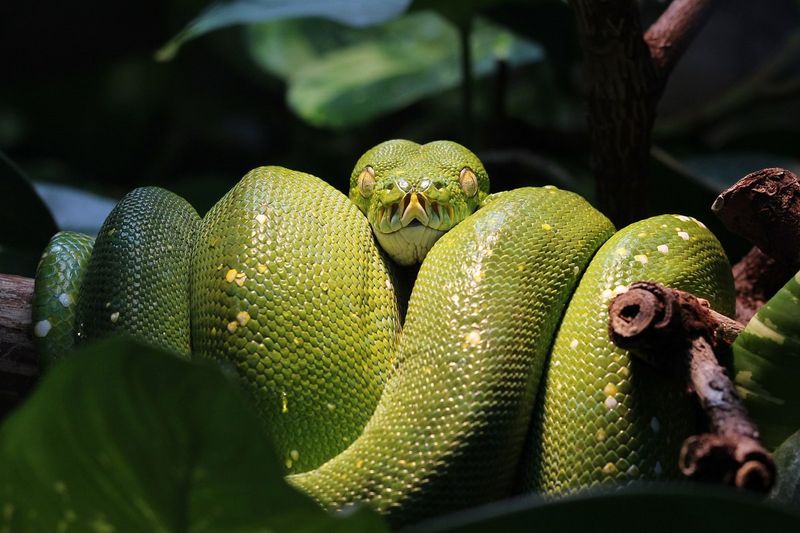
The green tree python, draped in emerald hues, is a marvel of camouflage in the Indonesian rainforests. Coiled among branches, it resembles the leaves surrounding it, a strategy for ambushing prey. The python’s vibrant color and ability to remain motionless enhance its leaf-like deception. This natural artistry allows it to flourish in a habitat teeming with life. Its presence is a vivid reminder of the delicate interplay of form and function, where nature crafts beauty and efficiency in harmony. The green tree python’s elegance lies in its seamless blend with life and environment.

